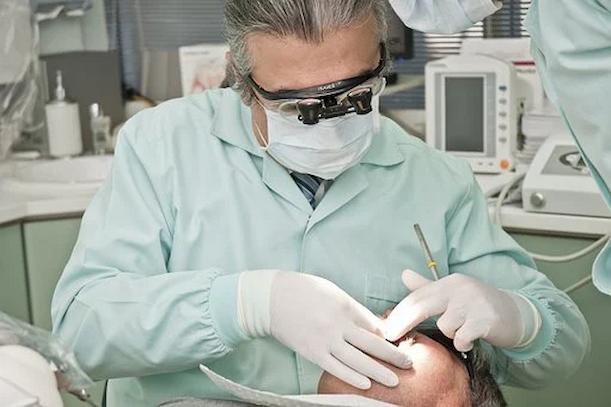
How Common Are Cavities?
The majority of Americans don’t live to adulthood without having at least a few cavities. In actuality, tooth decay in the permanent teeth has affected more than 90% of adults over the age of 40. Unfortunately, you cannot outgrow the risk of tooth decay. Even adults are susceptible to developing cavities due to aging-related changes.
What Are Cavities?
When the enamel, the teeth’s protective outer layer, is destroyed, tooth decay, also known as cavities. Your oral bacteria break down the sugar in the foods and beverages you consume to create an acid byproduct, which dissolves the minerals in your teeth. Cavities frequently develop in the spaces between your teeth, close to dental fillings, along the gum line, and in the grooves and pits of the teeth at the back of your mouth. If cavities are left unattended, the decay may invade the pulp of your tooth, which is a collection of blood vessels and nerves, as well as neighboring teeth. To save your tooth at this point, root canal therapy is required. However, in order to preserve your oral health, decayed and infected teeth that are too damaged to save must be extracted.
Read More: Can Cavities Cause Headaches
How Many People Actually Have Cavities?
The Centers for Disease Control and Prevention discovered in a study from 2016 that over 90% of adults in the US have had cavities. In addition, they stated that one in four adults have cavities that go untreated. Visit Paradigm Dental every six months to make sure you don’t have any cavities in your mouth. Additionally, we will remove tartar, which is merely hardened plaque, from your teeth as well as the sticky film of accumulated bacteria known as plaque.
A Cavity Could Occur In Anyone.
Despite the fact that cavities are more common in children, tooth decay can occur at any age. They might not brush their teeth thoroughly and consume more sugary foods and beverages.
Even adults develop cavities. Around cavities that were treated as children, new decay occasionally appears. Gum recession is more prevalent in adults. Due to this condition, plaque that causes cavities is exposed to the lower teeth.
What Kinds Of Cavities Are There?
All of a tooth’s layers are susceptible to tooth decay. The tough outer layer of tooth enamel can develop cavities after three years. Dentin, the middle layer, and pulp, the innermost layer, are where decay begins to spread more quickly. The nerve endings and blood supply of a tooth are found in the pulp. the following types of tooth decay:
- Smooth surface: The tooth enamel is destroyed by this slowly expanding cavity. With proper brushing, flossing, and dental cleanings, you can avoid it and even occasionally reverse it. This type of tooth decay between the teeth frequently occurs in people in their 20s.
- decay in fissures and pits: On the upper portion of the tooth’s chewing surface, cavities develop. Back teeth’s front surfaces can also develop decay. Pit and fissure decay usually begins in adolescence and advances quickly.
- Root decay: Root decay is more common in older adults with receding gums. The tooth’s root is exposed to acid and plaque due to gum recession. Preventing and treating root decay is challenging.
What Causes Cavities?
Cavities can develop due to a variety of reasons. typically takes place:
- Foods and drinks high in sugar and starch, such as fruit, candy, bread, cereal, soda, juice, and milk, are the main source of food for oral bacteria. These sugars are converted to acids by the bacteria.
- Plaque is created when bacteria, acid, food, and saliva combine. The teeth have a sticky coating.
- Without proper brushing and flossing, plaque’s acids dissolve tooth enamel, leading to cavities or holes in the teeth.

Risk Factors
Everyone who has teeth is susceptible to developing cavities, but the following factors can make it more likely:
- Tooth location. Your back teeth, or molars and premolars, are where decay most frequently occurs. These teeth have numerous roots, pits, and crannies as well as numerous grooves that can catch food debris. They are therefore more difficult to keep clean than your front teeth, which are smoother and easier to access.
- particular foods and beverages. Foods that stick to your teeth for a long time, like milk, ice cream, honey, sugar, soda, dried fruit, cake, cookies, hard candies and mints, dry cereal, and chips, are more likely to cause decay than foods that are quickly removed by saliva.
- frequent snacking or drinking. You give mouth bacteria more fuel to produce acids that attack and wear down your teeth when you consistently snack or drink sugary beverages. Additionally, drinking soda or other acidic beverages regularly throughout the day contributes to the continuous acid bath that forms over your teeth.
- feeding a baby before bed. When milk, formula, juice, or other sugar-containing liquids are placed in baby bottles at bedtime, the liquids stay on the baby’s teeth for hours while they sleep, feeding bacteria that causes tooth decay. This harm is frequently referred to as baby bottle tooth decay. If toddlers are left unattended with a sippy cup containing these drinks, similar harm may result.
- Inadequate brushing. When you don’t brush your teeth right away after consuming food and liquids, plaque quickly forms and the early stages of decay can start.
- lack of fluoride intake. Fluoride is a naturally occurring mineral that aids in cavity prevention and can even repair minor tooth damage. Fluoride is added to many public water systems because of the benefits it has for teeth. Toothpaste and mouthwash frequently contain it as well. However, fluoride is typically absent from bottled water.
- Younger or older age. Cavities are common in young children and teenagers in the US. Additionally, older adults are more vulnerable. Teeth become more susceptible to root decay as they deteriorate and the gums recede with time. Additionally, older people are more likely to take drugs that decrease saliva production, which raises the risk of tooth decay.
- Dry mouth. Lack of saliva results in dry mouth, and saliva washes food particles and plaque off of teeth, thereby preventing tooth decay. Salivary substances also function as a buffer against bacterial acid. By lowering saliva production, some prescription drugs, health conditions, radiation to the head or neck, and chemotherapy drugs can raise your risk of cavities.
- worn-out dental appliances or fillings Dental fillings have a tendency to deteriorate, lose strength over time, or form jagged edges. Plaque can more easily accumulate as a result, making it more challenging to remove. Dental appliances may stop fitting properly, allowing decay to start under them.
- Heartburn. Stomach acid can reflux into your mouth as a result of heartburn or gastroesophageal reflux disease (GERD), eroding your teeth’s enamel and seriously harming your teeth. By exposing more of the dentin to bacterial attack, increases the risk of tooth decay. Your dentist might advise seeing a doctor to determine whether your enamel loss is being caused by gastric reflux.
- Eating disorders. Significant tooth erosion and cavities can result from anorexia and bulimia. Purging causes stomach acid to repeatedly wash over the teeth, eroding the enamel. The production of saliva may also be hampered by eating disorders.
Symptoms
Depending on the size and location of the cavity, different signs and symptoms can be present. You might not even experience any symptoms when a cavity is just starting. As the decay spreads, it may result in the following signs and symptoms:
- Toothache, spontaneous pain, or pain that occurs without any apparent cause
- Tooth Sensitivity
- Mild to sharp pain when eating or drinking something sweet, hot or cold
- Visible holes or pits in your teeth
- Brown, black or white staining on any surface of a tooth
- Pain when you bite down
How Are Dental Problems Identified?
The best way to catch cavities early, when your dentist can still save a lot of the tooth, is to have twice-yearly dental exams. Your dentist will examine your teeth using a variety of tools. When your dentist probes a tooth, one that has a cavity will feel softer. Dental X-rays are another option. Cavities are visible on X-rays before the decay is apparent.
What Is The Management Or Treatment Of Cavities?
The extent of tooth decay determines the course of treatment. Cavity therapies comprise:
- Fluoride: Fluoride treatments can restore tooth enamel when decay is discovered early. Remineralization is the term for this procedure. You might require fluoride treatments at the dental office, prescription mouthwash, and toothpaste.
- Fillings: Dental professionals remove the decayed material after a hole develops in the tooth and then fill it. Silver amalgam, composite resin, or gold are the common materials used to make dental fillings.
- Root canal: Root decay-related pain is treated with a root canal. Endodontists are dentists who specialize in treating issues that affect a tooth’s root. This dentist removes the pulp, which has pain-producing nerve endings, during a root canal procedure.
- Tooth extraction: Your doctor might extract (pull) the tooth if a root canal isn’t an option. To replace a permanent tooth that has been extracted, you might need a dental implant. Implants prevent teeth from repositioning, which could alter your appearance and bite.
How Can I Avoid Getting A Cavity?
Plaque and the acids that cause cavities can be eliminated by practicing good oral hygiene, which includes routine brushing and flossing. Good oral hygiene practices include:
- Fluoride toothpaste should be used to brush teeth at least twice daily, ideally after each meal.
- limiting consumption of starchy, sugary foods and beverages.
- flossing every day to remove food and plaque from between teeth.
- at least twice a year for dental exams.
- teeth’s top chewing surfaces are protected by dental sealants.
When Should I Make A Doctor Appointment?
If any of the following occur, you should contact your healthcare provider:
- Bleeding gums.
- Difficulty chewing.
- Signs of infection.
- Swollen face.
- either a toothache or mouth pain.
What Inquiries Should I Make To My Physician?
Possibly a good question to put to your doctor is:
- Why did I get a cavity?
- What is the most effective method of treating this cavity?
- What actions can I take to lessen my risk of developing new cavities?
- Should I keep an eye out for any complications?





Average Rating